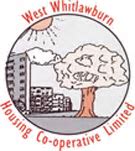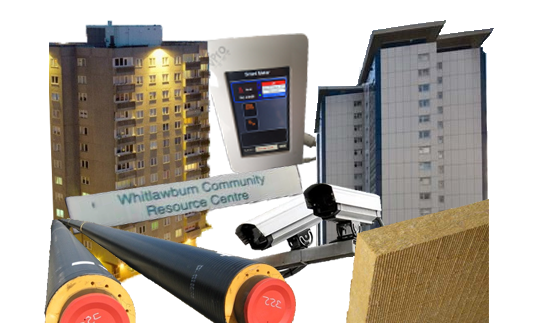The West Whitlawburn Housing Co-operative
 West Whitlawburn Housing Co-operative (WWHC) is located in the south-east of Glasgow near to Cambuslang. The housing estate was bought by the residents in 1989 and, as a cooperative, is now fully owned and controlled by them. Although the area has faced economic and social difficulties in the past it now stands as a paradigm of what can be achieved with tenant ownership. The mission statement of WWHC is to:
West Whitlawburn Housing Co-operative (WWHC) is located in the south-east of Glasgow near to Cambuslang. The housing estate was bought by the residents in 1989 and, as a cooperative, is now fully owned and controlled by them. Although the area has faced economic and social difficulties in the past it now stands as a paradigm of what can be achieved with tenant ownership. The mission statement of WWHC is to:
“provide high quality housing and services at affordable rents,
and promote community and environmental sustainability.”
The co-op comprises 644 dwellings split between 6 high-rise tower blocks, 5 low-rise terraces and 100 new-build properties. The towers and terraces were built in the 1960's. The site also has a community space, recreational facilities, WWHC offices and an Energy Centre. The video below shows the layout of the site.
Previous Energy Improvements
Since being taken over, the co-op has invested over £50m at the site. This has been targeted at improving the quality of the housing stock, the security of the estate, recreational facilities and the heat supply to the dwellings. Its investments have included:
- A local community centre;
- Installation of CCTV throughout the area;
- External Wall Cladding (EWC) on 6 multi-storey flat blocks;
- Double glazing on 5 terrace blocks;
- Replacement of roofing;
- Rewiring of the properties;
- Water tank renewals;
- Building 100 modern dwellings; and,
- A biomass powered District Heating System (DHS).

Figure 1: Investments at WWHC
Current Challenges and Issues
While previous investments has significantly improved the housing stock and energy bills of WWHC members, there are still many areas where future work and improvements could be made.
Effectiveness of Previous Upgrades
Though previous fabric upgrades have improved the building envelope of the properties, these upgrades may not be achieving design performance due to poor installation and thermal bridging. Through inital contact with WWHC, it was discovered that several residents have reported thermal discomfort in the tower block flats. This may be due to a number of issues such as the location of the flat within the block.
Ventilation and Indoor Air Quality
The installed upgrades may have produced unforeseen issues such as internal and interstitial condensation. This is particularly true when the properties are poorly ventilated, which can have an impact on the indoor air quality. The towers are likely to be under-ventilated, leading to residents opening windows, resulting in a significant but avoidable heat loss.
Optimising an Oversized DH Network
The DHS was oversized at the design stage due to assumptions made on resident usage. Adapting the thermal storage could allow the biomass boiler to run optimally. Also reducing flow temperature and optimising overall system operation could reduce heat losses and decrease the operational costs of the system.
Decarbonising the DHS
The sustainability and carbon footprint of biomass power is currently under debate, giving potential scope for the use of greener, more sustainable heat sources at the site. There may be potential to use sources such as heat pumps (air, ground, mine water) or solar thermal to power the Heat Network.
Extending the DH Network
A solution to the oversizing of the network is to increase the load it meets. The network could be extended to supply the new builds on site or surrounding areas and dwellings, whereby the latter would provide WWHC with a new revenue stream.
Additional Renewable Opportunities
To increase WWHC’s sustainability other renewables could be exploited, such as wind or solar. Integrating electrical and heat generation could usher in smart integrated energy networks, with electrical generation providing a new revenue stream.
Project Objectives
To begin the project all the various energy questions and issues at WWHC were considered and mapped to highlight their connections and synergies. From this brainstorming process it was noted that many of the questions and issues of interest at WWHC were related and connected through the District Heating System. For example:
- Successful fabric upgrades would alter the demand on the DHS
- The DHS would remain functional under different operating conditions from heat pump replacement
- Increasing the storage to run the biomass boiler at a constant maximum and extending the network
The objectives reflected this with a focus on the accurate modelling of the District Heating Network. The project objectives were to:
- Model a real DH network on ESP-r using newly designed heating plant modules.
- Validate the DHS model using system data collected at WWHC.
- Investigate the functionality of the new ESP-r modules and identify issues.
- Calculate the energy, cost and carbon savings from operating DHS at reduced flow temperatures.
- Investigate the impact of altering the thermal store size and operation.
- Conduct a thermal investigation of the WWHC high-rise blocks.
